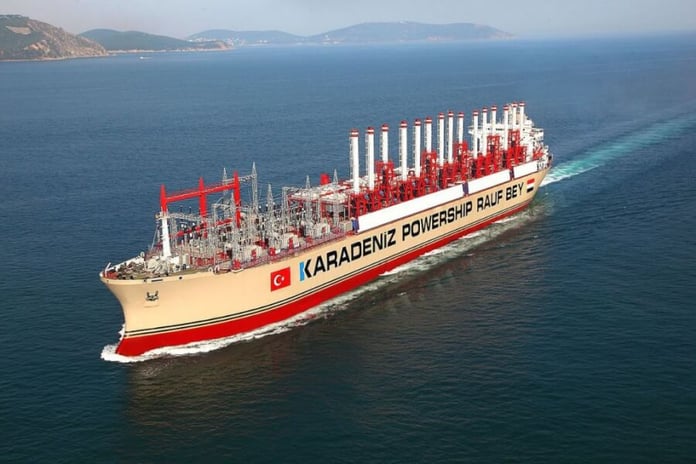Connect and get started: marine power plants are mobile and flexible. They provide energy in regions with poor infrastructure. But large cities where building land is expensive can also benefit.
Karadeniz power plant ship “Orhan Bey” docked south of Beirut supports electricity supply to Lebanon (2019)Use of domestic infrastructure
The advantages are obvious: In principle, the hardware costs for corresponding systems are comparable to power plants built on the land. But to build a power plant, the necessary resources must be available. When qualified and well-equipped construction and assembly companies and their specialists have to be flown in from afar, it becomes expensive. The concept is different for power plants, the components of which are mounted on floating platforms – so-called barges. “We call this the plug and play concept – connect and get started,” says Siemens manager Hossain.
Hamed Hossain, project manager at SiemensBut it is not only developing countries, remote coasts and disaster regions after earthquakes or tsunamis that lend themselves to operations by the floating electricity suppliers. In the industrialized countries, “floating power plants” – according to the English technical term – are particularly in demand where there is a lack of space or where property prices reach dizzying heights. “In megacities like New York or Hong Kong, building land is very expensive,” says Hamed Hossain, “if these land costs are included in the calculation, our floating power plants can be cheaper”.
Order from New York
In fact, New York has been partially powered by power plants that float in Upper Bay in front of the Brooklyn district for almost 50 years. These stations will soon be replaced by modern Siemens systems and even expanded. Thanks to their higher efficiency, they are more environmentally friendly than the old power plants. They can also be expanded with a desalination plant. Siemens is contractually obliged to operate the systems for twenty years and to provide spare parts and repairs during this time – a welcome additional business for the group.
Model of a modern floating gas and steam power plantIn the coming year, Siemens plans to connect a floating power plant in the Dominican Republic off the coast of the capital, Santo Domingo.
Data centers at sea
Digitization also opens up new markets. “The large Internet companies want to move their data centers to the sea because it is cheaper for them than building on the land,” says Hamed Hossain, “because it makes sense to provide electricity through floating power plants.” Gas and steam power plants with a high degree of efficiency, but also solar systems, which would then require platforms of immense size, could be considered.
Russia relies on nuclear energy for floating power plants. The “Akademik Lomonosov” of the company “Rosatom” is 144 meters long, 30 meters wide and equipped with two nuclear reactors. After almost ten years of construction, the floating nuclear power plant was towed to the Chukotka region in the far east of Russia in 2019 and docked in a specially developed port. First of all, it is to supply heat and later also electricity for the region if an old nuclear reactor goes offline on land. If the use of the “Akademik Lomonosov” is successful, Rosatom plans to offer similar floating nuclear power plants on the world market. However, critics already speak of a “floating Chernobyl”.
The Russian floating nuclear power plant “Akademik Lomonosov” sets sailThe U.S. Army also developed nuclear power plant ships to power military locations in remote areas from 1954 to the early 1970s. The first ship of this type was the “Sturgis MH-1A”. Researchers at the Massachusetts Institute of Technology in Cambridge are now working on a modern floating nuclear power plant again.


